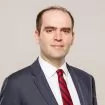The Supreme Court in Interactive Wearables LLC v. Polar Electro Oy and Tropp, David A. v. Travel Sentry, Inc., et al. declined to hear a pair of cases that could have clarified the abstract-idea exception to patent eligibility. No. 21-1281, 2023 WL 3440746, at *1 (U.S. May 15, 2023); No. 22-22, 2023 WL 3440747 (U.S. May 15, 2023). No opinion was issued, but the Court noted that Justice Kavanaugh would have heard the cases. This marks almost nine years since the Supreme Court last addressed the abstract-idea exception and articulated its current two-step framework to 35 U.S.C. § 101 in Alice Corp Pty. Ltd. v. CLS Bank Int'l, 573 U.S. 208 (2014).
In both Interactive and Tropp, the district court found the asserted claims directed to ineligible abstract ideas. The Eastern District of New York dismissed Interactive's claims related to a "wearable content player" providing information related to media content during a broadcast. 501 F. Supp. 3d 162, 167 (E.D.N.Y. 2020). The claims recited a wearable content player including a receiver, processor, memory, and display, which was controlled by another remote control device to "provide to the user . . . information associated with the content." Id. The district court found the claims were directed to the abstract idea of "providing information in conjunction with media content." Id. at 174. The claims also lacked inventive concept, according to the district court, because they merely "invoke[d] conventional and generic components arranged in a conventional manner." Id. at 179. On appeal, the Federal Circuit summarily affirmed the district court's dismissal. Interactive Wearables, LLC v. Polar Electro Oy, No. 2021-1491, 2021 WL 4783803, at *1 (Fed. Cir. Oct. 14, 2021) (citing Fed. Cir. R. 36).
In Tropp, the Eastern District of New York granted summary judgment on claims relating to a "dual-access lock" for airline luggage, which permitted controlled access by airport personnel using a master key. 527 F. Supp. 3d 256, 260 (E.D.N.Y. 2021). The district court found the underlying concept of a dual-access key "as old as the forgotten high school locker key," id., and held the claims directed to "the application of dual-access locks to airport luggage inspection," id. at 265. Critically, the representative claim recited "making available" a dual-access lock applied to a piece of airline luggage, "marketing the special lock to the consumers," and an "identification structure" signaling an agreement to subject the luggage to screening. Id. at 261. The claim further recited "the luggage screening entity acting . . . to use the master key previously provided to the luggage screening entity to, if necessary, open the individual piece of luggage." Id. According to the district court, this was "a long-standing fundamental economic practice and method of organizing human activity." Id. at 265. The district court found a lack of inventive concept because the claimed dual-lock lock was "a well-understood and conventional device" only incorporated into the existing practice of baggage inspection at airports. Id. at 269. On appeal, the Federal Circuit issued a per curiam opinion affirming the district court. Travel Sentry, Inc. v. Tropp, No. 2021-1908, 2022 WL 443202, at *2 (Fed. Cir. Feb. 14, 2022).
Plaintiffs in both proceedings filed petitions for a writ of certiorari to the Supreme Court, and in both cases the Solicitor General was invited to file a brief expressing the views of the United States. As amicus curiae, the Solicitor urged the Supreme Court to grant both petitions to "clarify the proper reach and application of the abstract-idea exception to patent eligibility under Section 101." Brief amicus curiae of United States, Nos. 21-1281, 22-22 at 10 (U.S. Apr. 5, 2023) ("Solicitor's Brief"). The Solicitor noted that, since the Supreme Court's last decision in Alice, "the Federal Circuit has [been] repeatedly divided in recent years over the content of the abstract-idea exception and the proper application of the two-step methodology under Section 101." Id. at 11. The Solicitor argued that taking up the cases would allow the Court to "illustrate the types of claimed inventions that fall both within and without the scope of the abstract-idea exception." Id.
On the merits, the Solicitor argued that Tropp was correctly decided but Interactive was not. The Solicitor first distinguished the cases by subject matter: The claims in Tropp recited "a 'process' for coordinating one aspect of airport luggage inspection," id. at 12 (quoting Bilski v. Kappos, 561 U.S. 593, 606-07 (2010)), while the claims in Interactive recited "a 'machine'—a 'tangible system'—in the form of a wearable content player and wireless remote-control device," id. (quoting Alice, 573 U.S. at 224). According to the Solicitor, Interactive's claims fall within patent law's "traditional coverage of technological and industrial arts," including "electronic hardware components that together compose a mechanical device." Id. at 14. The district court's articulation of the invention as an abstract idea was nothing more than a "function of the described machine." Id. at 15 ("The district court's characterization is akin to saying that a patent for a television is directed to the 'abstract idea' of displaying images and sounds."). For Tropp's claims, the Solicitor urged the Supreme Court to affirm the district court's holding that the claims were directed to methods of organizing human activity and not a physical device, such as a lock. Id. at 15. Tropp's claims recited a process that could also "be conceptualized as a method for 'marketing' a lock to consumers on the promise that the TSA is less likely to break it." Id. at 16.
In arguing for these outcomes, the Solicitor asked the Supreme Court to provide "much-needed clarification" around the abstract idea eligibility test. Id. at 11. The Solicitor urged the Supreme Court to focus 35 U.S.C. § 101 on the "traditional bailiwick of the scientific, technological, and industrial arts," and carve out technological innovations from the abstract ideas that capture "fundamental building blocks of technological innovations and innovations in non-technological fields." Id. at 12. For example, the Solicitor distinguished "[s]trategies for achieving non-technological aims, such as improved techniques for ordering economic relationships," which the Solicitor argued are abstract ideas, from improvements in computer technology, which the Solicitor argued are not. Id. at 13. The Solicitor also identified bright-line examples of non-abstract concepts: "[a]n automobile is not an abstract idea. A remote control is not an abstract idea. A camera is not an abstract idea. Generally speaking, technologies and industrial processes are not abstract ideas." Id. at 14.
In addition, the Solicitor urged the Supreme Court to decouple the eligibility inquiry from other statutory requirements, such as novelty, obviousness, and written description. Id. at 16-18. The district court's analysis in Tropp was flawed, according to the Solicitor, for conflating these issues. Id. "[A]pplying modified versions of other doctrines in the guise of a Section 101 analysis unmoors those doctrines from the statutory text and diminishes their analytical rigor." Id. 18. Section 101 and the abstract-idea exception, according to the Solicitor, should be applied to "screen out the sorts of nontechnological innovations that do not warrant patent protection" regardless of novelty, nonobviousness, and adequacy of the written description. Id.
The Solicitor's brief focused on the eligibility of hardware-based innovations, asserting that these are eligible "technological" advances. The Solicitor offered little guidance on how to handle the "borderline cases" it acknowledged exist between hardware and ineligible, abstract ideas. See id. at 14. This leaves unanswered difficult questions around how to deal with and distinguish eligible, non-abstract advances in software and financial technologies from those that are abstract economic practices applied to a computer. The Solicitor indeed agreed that "a person who invents improved computer technology may receive a patent if other statutory conditions are satisfied, even if the main utility of that technological improvement lies in the conduct of business." Id. (citations and internal quotations omitted).
Notwithstanding, the Supreme Court declined to revisit its Alice decision and identify additional guideposts for innovations in these borderline cases that have plagued federal courts since its Alice decision. As the Solicitor's brief indicated, Federal courts, practitioners, and even the USPTO have struggled to uniformly apply Alice's two-step framework. With the rise of artificial intelligence and every advancing technologies in software-based financial technologies, the reach of the abstract-idea exception will continue to be a live issue in patent prosecution and litigation. Further clarification will undoubtedly be needed absent intervention by Congress.
The content of this article is intended to provide a general guide to the subject matter. Specialist advice should be sought about your specific circumstances.


